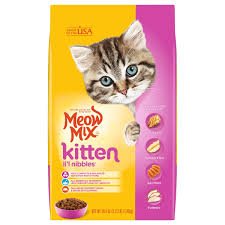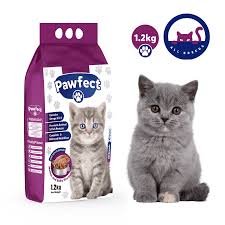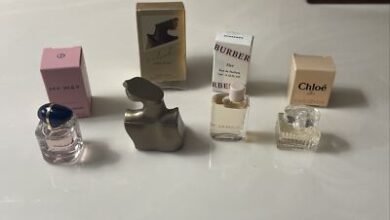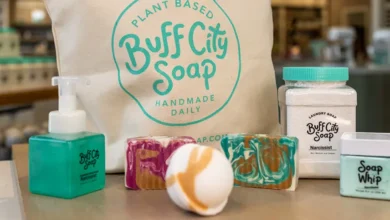The Ultimate Guide to Kitten Food: Feeding Your Furry Friend the Right Way

Introduction: Why Kitten Food Matters
When you bring home a kitten food, everything changes. Your heart melts, your phone fills up with cute pictures, and suddenly, your grocery list includes kitten food. But choosing the right food isn’t just about grabbing the bag with the cutest picture. It’s about setting your little fluffball up for a healthy, happy life.
kitten food grow fast — and I mean really fast. Within the first year, their bodies go through massive development. That means their nutritional needs are very different from those of adult cats. Kitten food is specifically designed to meet these needs with the right blend of protein, fat, vitamins, and minerals.
So, whether you’re a first-time kitten parent or just looking to refresh your knowledge, this guide will walk you through everything you need to know about kitten food. We’ll cover the basics, dive into ingredients, compare wet vs. dry options, and even share some pro tips for picky eaters.
Understanding Your Kitten’s Nutritional Needs
Protein: The Building Block

Protein is the number one essential nutrient for kittens. Why? Because their muscles, organs, skin, and immune system are all developing. A diet high in quality animal protein helps support that rapid growth. Look for kitten foods that list meat, poultry, or fish as the first ingredient. Chicken, turkey, salmon — all great sources of complete protein.
Kittens require more protein than adult cats. While adult cat food may hover around 30% protein, kitten formulas often range between 35–45%. It’s not just about quantity, though — quality matters just as much. The protein source should be easily digestible and biologically appropriate for felines.
Fat for Energy and Growth
Alongside protein, fat provides the energy kittens need to explore the world (and zoom across your living room at midnight). It’s also essential for brain development and helps in the absorption of fat-soluble vitamins like A, D, E, and K. Kitten food typically contains more fat than adult cat food for this reason.
Plus, fat helps make food taste better. Let’s be real — no one likes bland food, not even kittens. A good fat content makes food more palatable, especially important if your kitten is a fussy eater.
Vitamins, Minerals, and DHA
Kittens need a full spectrum of vitamins and minerals, including calcium and phosphorus for bone growth, and taurine for heart and eye health. DHA (an omega-3 fatty acid) supports cognitive development — think of it like brain food for baby cats.
Balanced kitten food will have all these nutrients in the right proportions. You don’t need to supplement unless advised by your vet, so trust the label if you’re buying from a reputable brand.
Wet vs. Dry Kitten Food: Which Is Better?
Wet Food: Hydration and Flavor
Wet food is often more appealing to kittens due to its soft texture and strong smell. It also provides extra hydration, which is super helpful, especially if your kitten doesn’t drink much water on their own. Cats are notorious for being lazy drinkers, and wet food can help prevent urinary issues down the road.
Another benefit? It’s gentler on baby teeth. Kittens start weaning around 4–5 weeks old, and during that stage, soft food is much easier for them to eat than dry kibble. Wet food can also be warmed slightly to enhance aroma, which helps stimulate appetite.
Dry Food: Convenience and Dental Benefits
Dry food has its perks too. It’s easier to store, doesn’t spoil as quickly once served, and can help reduce plaque buildup on teeth due to its crunchy texture. Many kitten parents like using dry food for free-feeding throughout the day, which is handy if you have a busy schedule.
However, you must ensure your kitten drinks enough water if you’re relying heavily on dry food. You can also mix in some wet food or water to soften the kibble, especially for younger kittens.
The Best of Both Worlds
Honestly, the ideal approach? A mix of both. Wet food for hydration and palatability, dry food for convenience and dental support. This way, your kitten gets used to both textures, making future dietary changes easier if needed.
Ingredients to Look For (And Avoid)
What to Look For
- Real Animal Protein First – Chicken, turkey, salmon, lamb — these should be at the top of the ingredient list.
- Named Fats – Chicken fat or fish oil is great. These fats are beneficial and species-appropriate.
- Added DHA & Taurine – Critical for development and only found in animal-based sources.
- No Fillers or By-Products – High-quality foods avoid things like corn, soy, wheat, or meat by-products.
What to Avoid
- Artificial Colors or Flavors – They serve no nutritional purpose and may irritate sensitive stomachs.
- Unspecified “Meat” or “Animal Fat” – Always go for named sources. If it just says “meat,” it could be anything.
- Too Many Carbs – Kittens don’t need a lot of carbohydrates. Some is fine, but it shouldn’t be a main ingredient.
How Much and How Often Should You Feed?
Feeding Schedule for Kittens
- 0–3 Months: 4–5 small meals per day. This can include a mix of wet and softened dry food.
- 3–6 Months: 3–4 meals per day. Their appetite might spike — don’t be surprised if they act like tiny tigers.
- 6–12 Months: 2–3 meals per day. Transition slowly toward a more adult-like feeding schedule.
Kittens burn calories like crazy, so don’t worry too much about overfeeding in the early months. It’s more important they get enough nutrients for healthy development. Always follow portion guidelines on the food packaging, but use them as a starting point. Every kitten is a little different.
Monitoring Growth and Weight
Weigh your kitten weekly if possible. You should see consistent, steady growth. If your kitten is losing weight, has dull fur, or lacks energy, it could be a sign that they’re not getting enough — or not the right kind — of food.
Special Diets and Considerations
Allergies and Sensitivities
Some kittens may show signs of food intolerance — think vomiting, diarrhea, or skin issues. If you notice these symptoms, consult a vet. You might need to switch to a hypoallergenic or limited-ingredient kitten food.
Breed-Specific Needs
Certain breeds, like Maine Coons or Siamese, may benefit from breed-specific kitten formulas that support their unique growth patterns. These are tailored in terms of size, nutrient density, and sometimes even kibble shape.
Transitioning to Adult Cat Food
Around 12 months of age, your kitten will be ready to transition to adult food. Make the switch gradually over 7–10 days by mixing increasing amounts of adult food with the kitten food. Sudden changes can upset their stomach.
Pro Tips for Feeding a Kitten
- Use shallow bowls: Tiny faces need easy access to food.
- Always have fresh water available: Especially if feeding dry kibble.
- Don’t free-feed junk food: Some cheaper dry foods are like kitten potato chips — tasty but not nutritious.
- Stick to a routine: Kittens thrive on structure.
- Watch for signs of boredom or overeating: Food puzzles can help keep them mentally and physically engaged.
Conclusion: Feed with Love and Knowledge
Feeding your kitten isn’t just about filling a bowl — it’s a big part of how you show love and care. Choosing the right kitten food means you’re giving them the best possible start in life. Whether you’re going with premium kibble, a fancy wet food combo, or even exploring raw or homemade diets (with vet guidance!), just remember: quality, balance, and consistency are key.
Your tiny tiger is growing fast, kitten food and their food is the fuel. Make it count.



